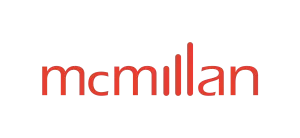- with readers working within the Pharmaceuticals & BioTech industries
- within Transport and Tax topic(s)
- with Senior Company Executives, HR and Finance and Tax Executives
Following the Federal Court of Appeal's decision in Steelhead LNG (ASLNG) Ltd. v Arc Resources Ltd. ("Steelhead"),1 the Federal Court of Canada recently issued its decision in Proslide Technology, Inc. v Whitewater West Industries, Ltd. ("Proslide")2 and provided further guidance in such decision on what constitutes the "using" and "making" of a patented invention under Section 42 of the Patent Act in the context of patent infringement in Canada.3
Background
ProSlide Technology, Inc. ("ProSlide"), a waterslide manufacturer, alleged that its competitor, WhiteWater West Industries, Ltd. ("WhiteWater") had infringed several of its patent claims directed to waterslide "features".4 At issue before the Federal Court was WhiteWater's manufacturing of three different waterslide features: the "AquaSphere," the "Orbiter" and the "Tailspin".
The Federal Court found that none of the three waterslide features offered by WhiteWater infringed the patent claims asserted by ProSlide. The Federal Court also found a number of patent claims asserted by ProSlide to be invalid.
Federal Court's Analysis
Generally, under Section 42 of the Patent Act, a patentee has the exclusive right, privilege and liberty, in Canada, of making, constructing and using the invention covered by the patent, and selling the invention to others to be used.5
As understood by the Federal Court, WhiteWater's waterslide features were designed in Canada but were manufactured and assembled abroad. ProSlide argued that, among other things, (i) WhiteWater first created conceptual and detailed designs and drawings of its waterslide features in Canada, (ii) WhiteWater then provided those designs and drawings to subcontractors who manufactured waterslide components based on the designs and drawings outside of Canada, and (iii) WhiteWater sent instructions for the assembly and supervised installation. In ProSlide's view, such activities created a "real and substantial connection to Canada," and liability under the Patent Act may arise on such connection alone.6
In accordance with the legal principles laid out in the Steelhead decision, the Federal Court re-stated that, where a patent claims a physical object, the patentee's exclusive rights under the Patent Act to "use" an invention extend only to that physical object and do not include the use of conceptual designs or drawings of that physical object.7
The Federal Court further noted that such principle extended equally to what constitutes "making" under the Patent Act. Namely, where the invention as claimed is for a physical object, the creation or making of detailed computer-aided designs and mechanical drawings of such physical object does not constitute "making" such invention under the Patent Act.8
The Federal Court concluded that WhiteWater's conceptual creations, in Canada, of waterslide features to be manufactured and assembled outside of Canada do not constitute "making" or "using" under the Patent Act. Therefore, such creations were not acts of infringement under the Patent Act.
Key Takeaways
Key takeaways from the Proslide decision include the following:
- Per the Steelhead decision, where a patent claims a physical object, the patentee's exclusive rights under the Patent Act to "use" an invention extend only to that physical object and do not include the use of conceptual designs or drawings of that physical object.
- By extension of the Steelhead decision, where a patent claims a physical object, the patentee's exclusive rights under the Patent Act to "make" an invention extend only to that physical object and do not include the making of conceptual designs or drawings of that physical object.
Footnotes
1. Steelhead LNG (ASLNG) Ltd. v. Arc Resources Ltd., 2024 FCA 67; for a further discussion on the Steelhead decision, please refer to the McMillan Bulletin dated May 6, 2024, entitled "Navigating the Grey: Deciphering "Use" in Patent Infringement Claims".
2. Proslide Technology, Inc. v Whitewater West Industries, Ltd., 2024 FC 1439 [Proslide].
3. Patent Act, RSC 1985, c P-4 [Patent Act].
4. Proslide, supra note 2 at para 5.
5. Patent Act, supra note 3, s 42.
6. Proslide, supra at paras 118-119.
7. Ibid, at para 120.
8. Ibid, at para 121.
The foregoing provides only an overview and does not constitute legal advice. Readers are cautioned against making any decisions based on this material alone. Rather, specific legal advice should be obtained.
© McMillan LLP 2024



